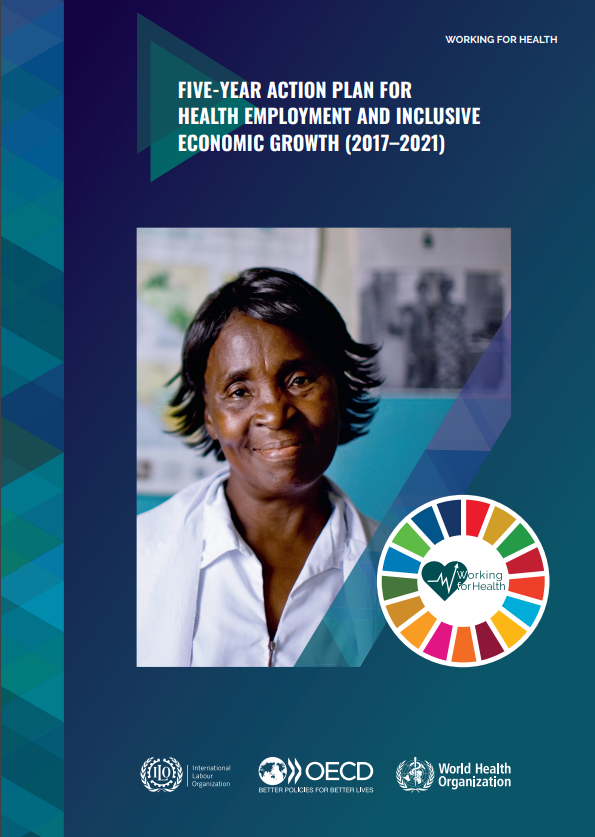
While gender issues have been at the top of the global agenda, there are few comprehensive studies on gender in the health and social workforce at the global level. The WHO had recently released a study in 104 countries that found that seven out of ten health and social workers are women, and unpaid care work represents half of the women’s contribution to global wealth (USD 3 trillion): however, nearly half of this work is unpaid and unrecognized (about 2.35% of global GDP). Moreover, even when women’s representation in the most highly paid health occupations has been improving steadily since 2000, they are less likely than men to be in full-time employment in the health sector and, there is still an average gender pay gap of around 28% exists between men and woman in the health workforce.
With this number, in March 2, 2016, the High-Level Commission on Health Employment and Economic Growth was established in response to United Nations General Assembly resolution 70/183 on Global Health and Foreign Policy: Strengthening the Management of International Health Crises with the participation of the World Health Organization (WHO), Organization for Economic Cooperation and Development (OECD), and the International Labor Organization (ILO). The Commission launched its first report on January 2017 called “Working for Health five-year action plan (2017–2021)” pointing out that as populations grow and change, the demand for health workers, is estimated to almost double by 2030 with the expected creation of around 40 million new health worker jobs, primarily in upper-middle and high-income countries. Few economic sectors present opportunities for steady growth in decent work, especially in light of sizeable potential job losses in other economic sectors due to rapid technological advances and the changing organization of production and employment. Nonetheless, if universal health coverage is to be achieved and sustained by 2030, this increase is going to take place together with a shortfall of approximate 18 million health workers.
If all these predictions become a reality, global strategies are going to be needed not only to generate decent jobs decent health sector jobs at the right number in the right places but also to invest in gender equity in the growing health working sector. One of the High-Level Commission recommendations was to “maximize women’s economic participation and foster their empowerment through institutionalizing their leadership, addressing gender biases and inequities in education and the health labor market.” Resilient health systems and universal health coverage cannot progress without consideration of the gendered aspects of the workforce.
Both labor and health experts have noted that health workforce gender imbalances are a significant challenge for health policy-makers. In fact, after a review effort of 170 studies of gender and equity in the global health workforce, the Global Health Workforce Network and the WHO concluded, first, that in general, women deliver global health and men lead it. Off course, gender parity in leadership varies by country and sector, but generally, men hold the majority of senior roles in health from global to community level. Second, Workplace gender biases, discrimination, and inequities are systemic, and gender disparities are widening. In 2018 it was estimated that workplace gender equality was 202 years away – longer than 2016 estimates. Third, as mention above, women in global health are underpaid and often unpaid. It is estimated that women in health contribute 5% to the global gross domestic product (GDP) (US$ 3 trillion), out of which almost 50% is unrecognized and unpaid. Fourth, workplace violence and sexual harassment in the health and social sector are widespread and often hidden, and finally, occupational segregation by gender is broad and universal with women dominating nursing and men dominating surgery (horizontal segregation).
Giving the above a that the health and social sector is a significant and growing employer, offering opportunities for young women and men to find a decent job, there is clearly a case for paying more attention to gender discrimination and inequality as they operate in the health workforce. Health workforce investments and action could definitely contribute to gender equality and maximize women’s economic empowerment and participation in the labor market. However, this is not the only benefit of advocating for gender equity in the health workforce. The High-Level Commission on Health Employment and Economic Growth has shown that “health workforce investments coupled with the right policy action could unleash enormous socioeconomic gains in quality education, gender equality, decent work, inclusive economic growth, and health and well-being”, going against the long-held belief that investment in the health workforce is a drag on the economy.
The mentioned gains of making gender equality a priority in terms of leadership and political action and the current scenario for women in the health workforce are just the right incentives to mobilize efforts within countries. Several specific actions can be carried out at the global, state, and local institutional levels to address gender discrimination and inequality in the health workforce.



